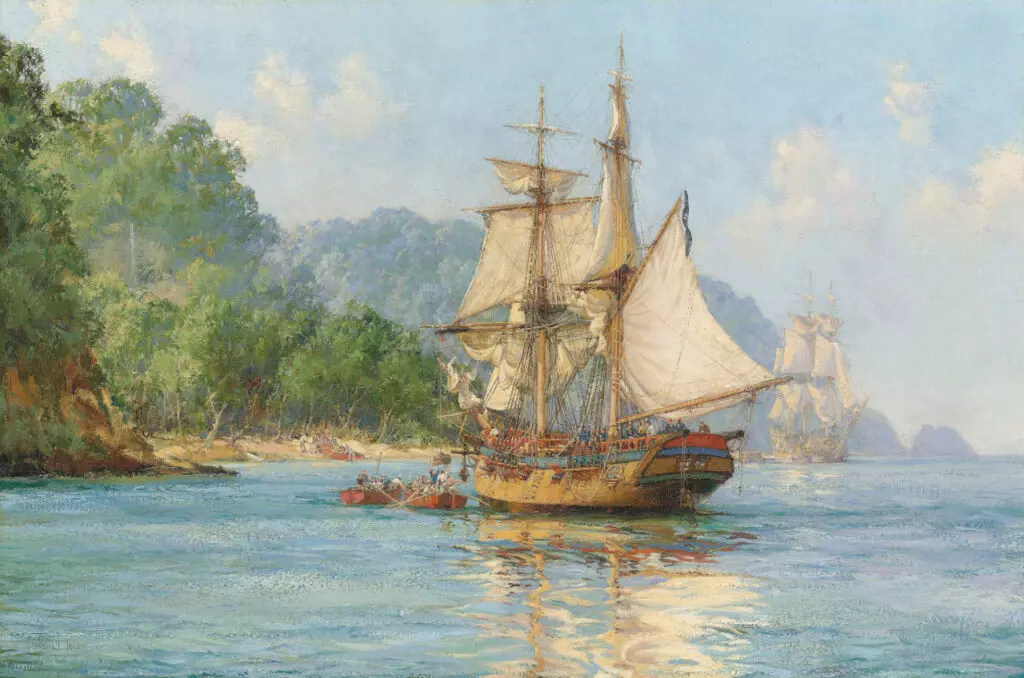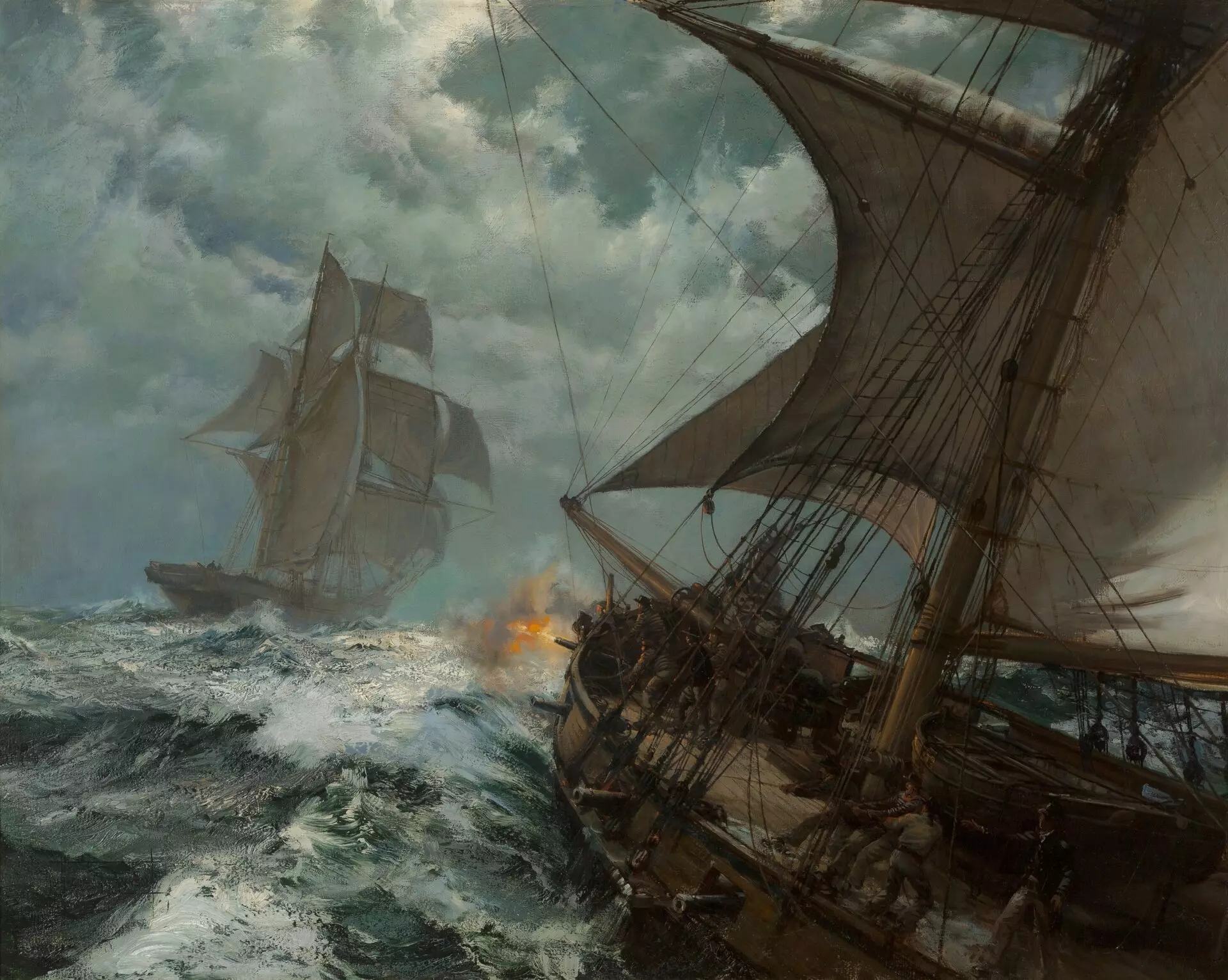“Here, then, is the irony of the “realist” novel: the very gestures with which it conjures up reality are actually a concealment of the real” (Ghosh 2016, 23).
A New Voyage Round the World is the personal journal of William Dampier, wherein he recounts his discoveries and observations, throughout the course of his journey traveling the world as an English privateer. The observations within his journal are seemingly limited to the general collection of knowledge.Dampier’s writings are comprised, largely, of naturalistic and proto-anthropologic descriptions of things and people unknown to a European public, patriotically contributing to the fount of British knowledge. However, due to Dampier’s conviction that the importance of his writing lay inextricably within his systematic cataloging of discoveries, the deeper reality of his privateering exploits are generally concealed. Passionate glimpses “of the real,” at times, peek through Dampier’s naturalist facade. One instance of this is when after 51 starving days, Captain Swan and his crew cross the Pacific and land at Guam. Whether due to the meager provisions, or the banality of the endless ocean, Dampier’s account of this series of events is more personally emotional than scientific, and therefore “conjures up reality” in a more meaningful way. This shatters the scientific version of reality he has spent his whole journal portraying and shows what he has spent the whole book concealing.
Upon arriving at Guam at night, a Spanish priest “hailed us to know from whence we came and what we were: to whom answer was made in Spanish, that we were Spaniards, and that we came from Acapulco” (Dampier 2007, 208). Upon the priest’s boarding of the Cygnet, Capt. Swan received the Priest with much Civility, and conducting him into the great Cabbin, declared That the reason of our coming to this Island was want of Provision, and that he came not in any hostile manner, but as a Friend to purchase with his Money what he wanted: And therefore desired the Priest to write a Letter to the Governour to inform him what we were, and on what account we came. For having him now aboard, the Captain was willing to detain him as an Hostage, till we had Provision (208). For Dampier, taking prisoners was a rather commonplace occurrence, which, throughout his journaling, he routinely glosses over. For example, he mentions “having set our Prisoners ashore, we sailed from Luconia the 26th day of February,” or, more commonly, he altogether neglects to mention their presence (264). The focus on the priest the crew takes prisoner upon arriving at Guam is unique in the attention paid to him, as well as how it is addressed until he is released.

In particular, the way Dampier phrases the circumstances surrounding the priest’s capture reveals more about the realities of the privateer existence than much of A New Voyage Round the World accomplishes. Dampier downplays the crew’s initial deception of the priest, convincing him that they were Spanish, which enabled them to bring him willingly aboard. Then, once aboard, Dampier phrases the encounter with an aristocratic courtesy. Captain Swan does not take, capture, or man-handle the priest, but rather “received” him, later “conducting [him] into the great Cabbin” (208). The language in this encounter is wholly unique to this particular prisoner. Previously, Spaniards were given no special attention by Dampier, and the language around their capture was limited to the extremely banal, such as, “we presently brought these prisoners aboard and got under sail” (14). This banal language used around the taking and releasing of prisoners brings about a sense of realism that scientific. It is real only in that it is highly accurate as far documentation of dates, locations, and quantities goes.
However, in the temporary imprisoning of the Spanish priest in Guam, the reality that Dampier attempts to conceal peeks through. Phrases like, “the Captain was willing to detain him as a Hostage” show an attitude towards hostages unseen throughout the rest of Dampier’s story (264). By telling it as “the Captain was willing” Dampier suggests two things. First, he exerts a subtle English superiority over the Spanish, suggesting the English have to be willing to take a Spaniard captive and is not something they would do out of necessity. Further, Dampier phrases it gently, softening the actual terror of the situation. Instead of tricking and imprisoning a priest Captain Swan is merely “willing to detain him” (264). This soothing of facts is necessary to maintain the naturalistic, scientific reality Dampier chooses to present as reality throughout the rest of his journal.
Reality continues to peek out from behind Dampier’s chosen scientific reality throughout this passage. In every sentence Dampier purposefully tacks on phrases attempting to ease the situation, making it fall more in line with his previous descriptions of prisoners. The first thing Dampier relays after telling how they took the priest hostage is that their ship “came not in any hostile manner, but as a Friend” (264). But, no matter how Dampier phrases it, he is still a friend who will kidnap and leverage you. The scientific-reality Dampier wants to convey is undercut by describing the situation for more than one sentence. Even though he cloaks this kidnapping, pinning on peaceful messages about “friends” and merely desiring to“purchase [Provisions] with his Money,” a new, different reality this peeks through (264). This intentionally concealed reality then starts to cast doubt on every other thing Dampier has presented within his chosen scientific reality.
Throughout A New Voyage Round the World Dampier portrays a reality of his choosing. One that is as defined by brevity as it is scientific. By portraying this reality Dampier writes as a naturalist traveling the world. However, by “the very gestures with which” he “conjures up reality” he is actually concealing “the real” (Ghosh 2016, 23). Dampier inadvertently lets the “real,” peek through when the ship he is on captures the priest in Guam. In this scene reality—not the scientific reality that Dampier presents—is shown to readers.
Bibliography
Dampier, William. 2007. Memoirs of a Buccaneer: Dampier’s New Voyage Round the World, 1697. Mineola, New York: Dover Publications.
Ghosh, Amitav. 2016. “Chapter 6.” In The Great Derangement, 15–24. University of Chicago Press.

Leave a Reply